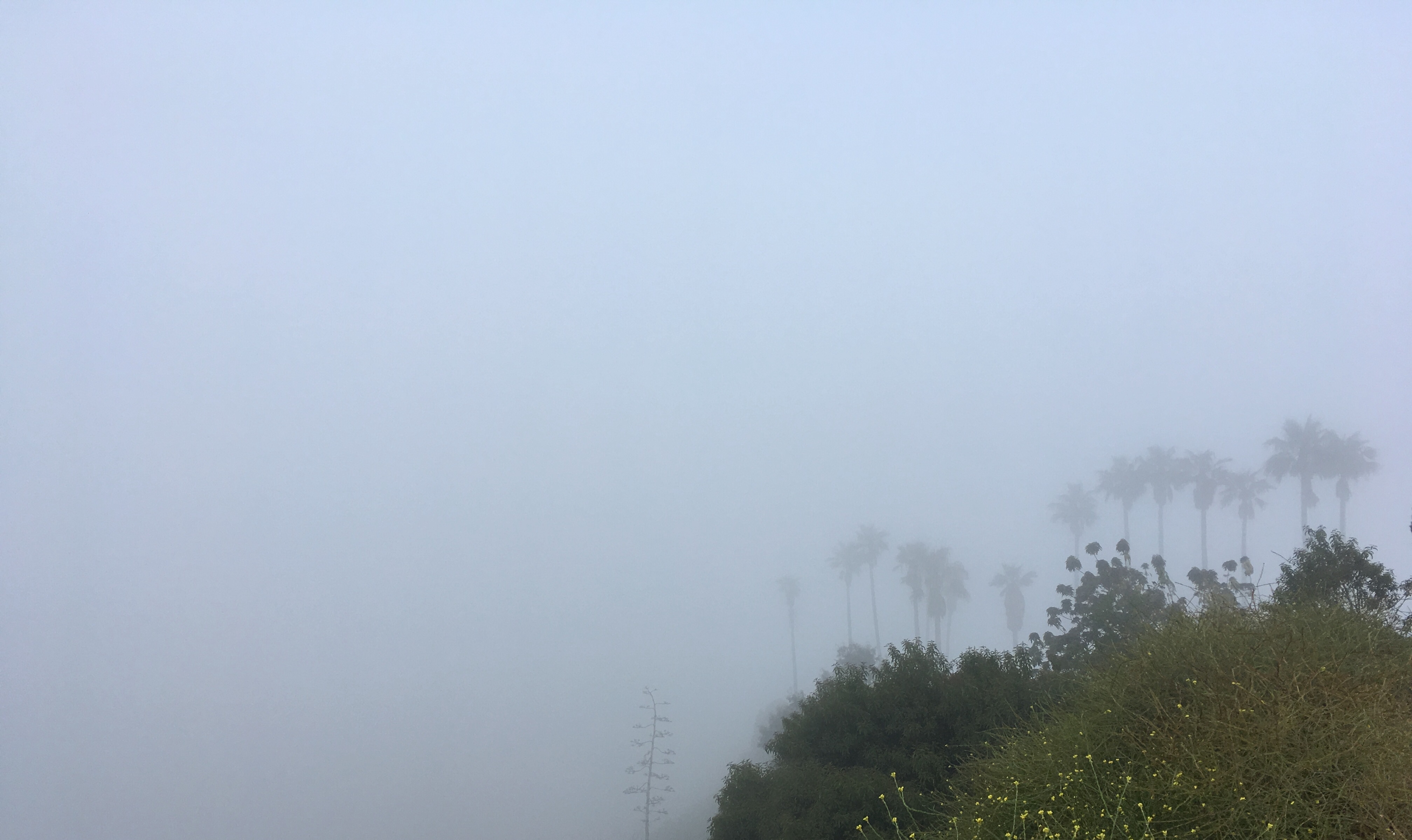
This is the seventh entry in a series in which writers give a report on the weather. Any meteorological statements made may range from the personal to the scientific, from observable weather to the felt.Read the first entry, by Andrew Durbin; the second entry, by Amina Cain; the third entry, by Madeleine Watts; the fourth, by Andrew Durbin; the fifth, by Josephine Rowe, the sixth by Ryanaustin Dennis.
June started with an air conditioner’s gentle whoosh, like the white noise machine in a psychiatrist’s office, but turned down low.
For the first few days of the month, Los Angeles was skyless: neither sunrise nor sunset bookended the day. At most there was a strip of orange, faint, way out over the coastline. The difference between ocean and horizon.
June 2. Outdoors the sky sank lower until it buried the mountaintops. Bananarama played “Cruel Summer” on the car stereo (on KOST 103.5). When the clouds broke, it was a studio backdrop: the Hollywood sign, Griffith Observatory, the sky spread wide and scattered.
In the neighborhood of Los Feliz, fifteen miles from the Pacific coast, it is often easy to forget that L.A. is a beach town. June gloom reminds you.
The Los Angeles Times reported that air pollution killed more people here than in any other U.S. city—1300 “excess deaths” in 2017.
Throughout June, atmospheric CO2 levels remained near record highs after peaking at 415 parts per million the month before.
June 4. Doppler radar mistook migrating ladybugs for a storm. In the news: a swarm of more than a thousand earthquakes in the San Gabriel Valley. On the Times’ website, a forty year-old photo of a woman on a smoggy day—driving a convertible, wearing a gas mask.
L.A.’s air remains unhealthy, the city still the smoggiest in the country.
One hot morning, I watched from the top of Griffith Park’s Mount Hollywood, a thousand feet above the city, as smog pooled below. Nearby hills became islands, their tops jutting above the ozone. Just over downtown’s towers’ heads: a dark gray line, perfectly horizontal.
Our phones alerted us to the toxicity of the air, while one spectacular cirrus, long-necked like an egret winged a westward course on curled plumage that suddenly transformed into a poodle’s hindquarters.
June 6. The sky is featureless, a non-place, a pause, a hiatus between weather.
The forecast keeps saying the clouds will break up, and we’ll get partial, or even total, sun. This never happens. Instead, the sky reaches down to rub itself against the surface of the earth. The horizon, already obstructed by mountains, vanishes further and is lost.
The clouds keep lifting and thinning but persist as a sort of thin film over the city, diffusing sunlight so that it seems to come, if not from everywhere, from nowhere in particular.
June 8. Cloudy turned to partly cloudy for part of the afternoon, then back.
When the clouds break up, their smudges remain, white above, greyed out by their own shadows on the bottom. Blue skies a momentary hiatus: the sky’s smudges reunite into a blanket before sunset, depriving Angelenos of color.
June 9. It’s summer, all in an instant.
After over a week of overcast skies, we were met with record high temperatures that seemed like foreshadowing. Heat brought wildfires to the mountains north of the city and to the mountains within the city’s limits. Meteorologists announced the arrival of the year’s first fire weather: a blaze north of Los Angeles, an amusement park evacuated.
A scientist imagined climate change resulting in an atmosphere too hot for clouds. Local newspapers predicted rising ocean temperatures might one day put an end to L.A.’s overcast Junes. National news reported that California’s unusually wet weather during winter and spring could mean an especially bad fire season. One article cited eight wildfires in the previous week as ominous foreshadowing of what might come. Forestry crews in the Sierras began control burns. Historically, wet winters have led to mild fire seasons, but climate change has produced extreme weather that upsets that pattern.
Spotify’s algorithm played “Everyday is an Emergency,” and “Cool in the Pool.”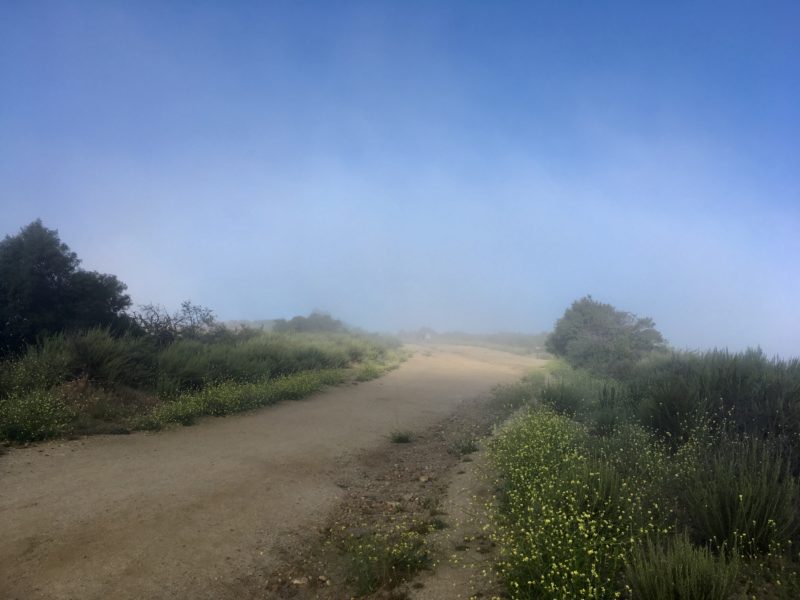
June 10. The hottest day of the year to date, and our building’s water is being shut off, so we fill mason jars, stash them in the fridge for later. Sometimes I wonder if it’s safe to drink the water at all. Ice particles formed clouds high in the troposphere and fell, leaving long streaks behind them that were shaped by turbulence into curls and tufts, commas and fish skeletons.
Every passing car kicked up a windstorm in miniature. A dust made of soot and asphalt and worn down rubber tires settled on our window sills.
California’s utility company PG&E, bankrupted by last year’s wildfires, began cutting off customers’ power when forecasts called for fire weather.
News reported that 2 gigatons of Greenland’s ice were lost in a single day, while experts anticipated a record melt season. The Guardian predicted an ice-free Arctic in 40 years.
June’s mostly not summer in L.A., but when it is, it’s hot.
Throughout the heat wave, cirrus formed high in the troposphere. Heavier ice particles within the clouds fell and left streaks behind them. The Century Dictionary uses the words “cirriferous” and “cirrigerous.” “A curl or tuft of hair, tuft or crest of feathers,” it reads, “or also a tendril, a filament of an animal, a form of cloud, etc.”
Google’s search results misspell some of the definition’s words as others: “filament of a. pliant, a fringe, in L.”
The “streamers” that trail from cirrus clouds are made of snowfall. The International Cloud Atlas lists shapes: feathers, streaks, ripples, waves. It describes “more or less irregularly curved white filaments which are always fine and do not terminate in hooks or tufts,” and “more or less isolated, small, rounded tufts, often with trails.” Some cirrus, the atlas explains, are “arranged in a manner suggestive of vertebrae, ribs, or a fish skeleton.”
June 12. Clear skies, with some clouds in the morning. A persistent swarm of tiny things hovered over the cluster of skyscrapers and high rises that is downtown L.A. The month began at the tail end of the wettest year in U.S. history.
“At the beginning of the twentieth century,” Kate Marvel writes, “a faint fixed pattern becomes discernible among the randomness, a quiet but strengthening note against a background symphony. Some regions”—among them, California—”dry out.”
In the evening, stratocumulus lenticularis.
Throughout the month, the sky announced itself as the record of the flight paths that crisscrossed it. At times, it seemed like it was trying to say something: a flock clumped across the sunset, just above the Hollywood sign. A contrail unspooled itself into cursive.
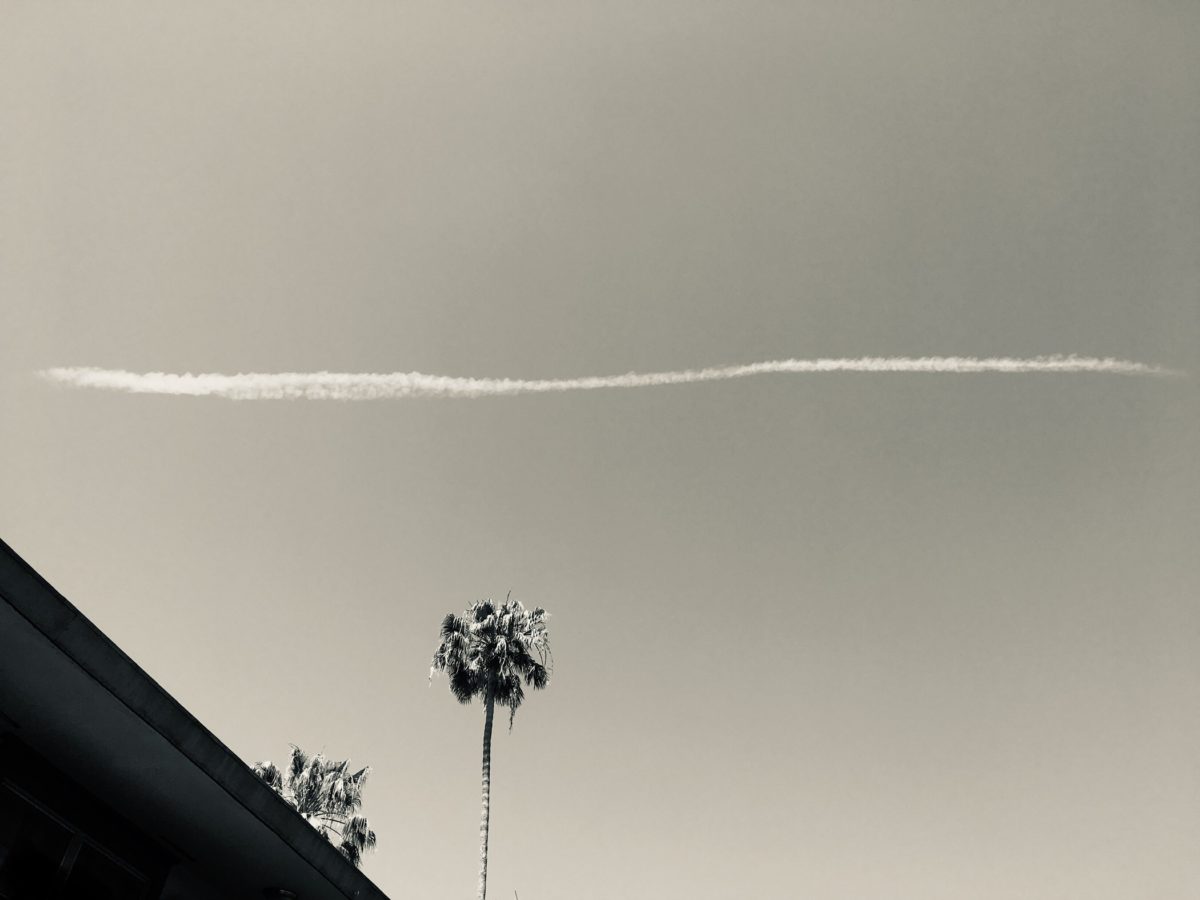
Skywriting on a Sunday: “America’s Best Rates.”
June 14. From The Cloudspotter’s Guide: “This Stratus is making me feel claustrophobic.”
Stratus clouds—unbroken and uniform, hung low enough from the firmament to rest below the mountaintops. As the land is warmed, the air above it lifts the clouds; as their undercarriage is lifted, they undulate.
I watched throughout the morning as a low-hanging stratus layer lifted and gradually broke apart as it rose. What I was seeing was heat: as the day warmed, air lifted the clouds higher.
At night, the sky rolled in like waves in slow motion.
Weather is a series of repetitions and variations.
July 4. When the 6.4 hit, Sarah and I both missed it.
Recalling that moment is a little like looking at a snapshot: a lost dog in the corner, shivering and afraid—Sarah points at it and/or calls out to it from the foreground—while a car drives by somewhere just out of frame. Over her shoulder, a woman opens her front door. She’s about to rush into her yard and ask, “was that an accident,” or something. “What was that terrible noise?”
We didn’t feel a thing. The evening before that first quake, I’d heard coyotes near the edge of Griffith Park, startled by bottle rockets, yodeling.
After the first quake passed, our cellphones collected testimony from those who had felt it: a rolling movement, a gentle rolling, a rolling or a swaying, “swaying back and forth from side to side,” as if you were on a boat, maybe. People talked about feeling motion sick despite standing still or sitting. They talked about the sound it made.
The news described cracks in the earth in the desert, the highway broken in places.
We took the lost dog with us, and for the next hour or so went door-to-door, looking for its home. By the time night came, the holiday was underway. Driving to a party, Miwa and Jameson and I were steered by neighbors along a path that wound between home-grown fireworks displays. A low, chemical fog hugged the streets. From a stranger’s backyard, we could only just see the tops of the official show at Dodger Stadium in the distance, our view mostly obstructed by the Elysian Hills. The foreground was filled with illegal starbursts: lithium carbonate red, magnesium white.
The air tasted like explosions for days. Every aftershock, felt and unfelt, was recorded: photos of supermarket shelves a hundred miles away, spilled. Video footage of a built-in swimming pool’s water upended, dust kicked up by landslides, chandeliers swinging by themselves, wildly.
Satellite images showed where the ground had moved thirteen feet, where water had erupted from beneath the surface of the earth. A picture of someone tentatively extending a fallen tree branch into one of the cracks the quake had opened, then picture after picture of people thrusting in their arms and legs, or pressing an ear to broken pavement, as though listening for something.
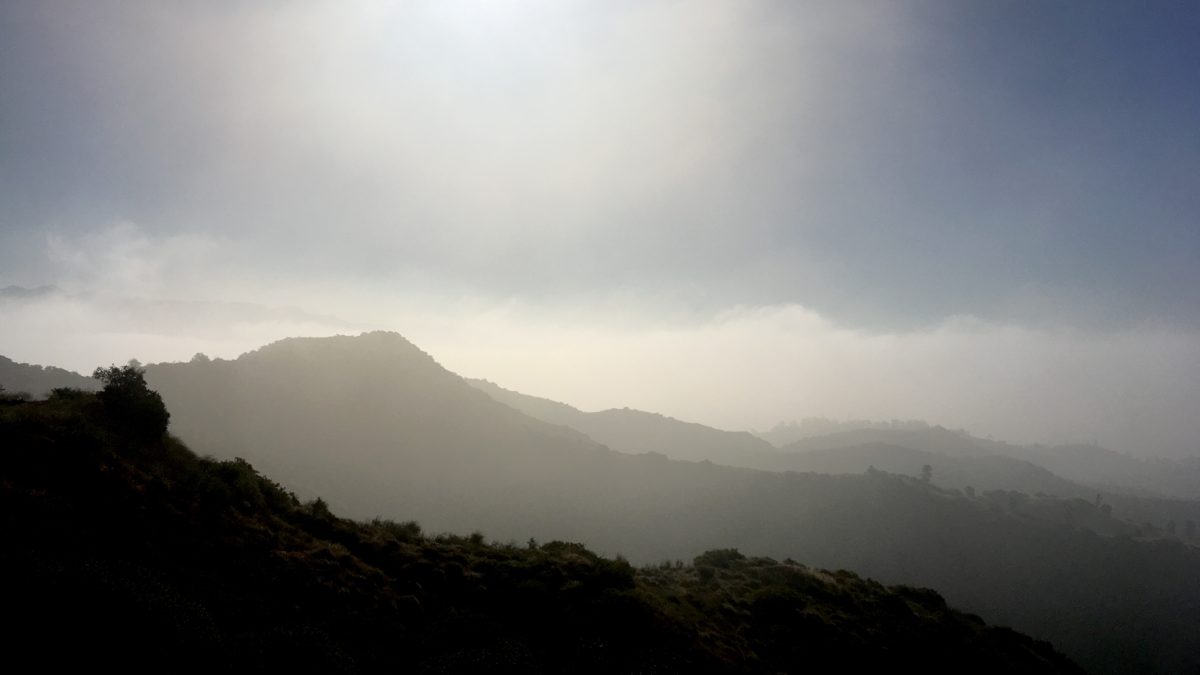 “It looks like a tornado went through,” someone said in the local paper.
“It looks like a tornado went through,” someone said in the local paper.
My mom, in Bakersfield, a little closer to the epicenter than we were, sent a picture of a vase she said had moved at least a foot.
By the end of the month, they were saying it was the hottest in human history. Every heatwave brought on a wave of panic: two hundred billion tons of Greenland ice melted into the sea, smoke clouds from vast Siberian fires burning since the beginning of June finally reached the west coast, hundreds of reindeer starved to death in Norway. Still, it was mild where we were; still, I waited out the month in office building a.c., drank the recommended two to four glasses of water every hour.
In Griffith Park, uphill from our house, pale orange vines spread over the hillside, coiled themselves around the leaves and stalks of other plants, bit in with vegetable teeth and drank their sap.
At night, yucca moths gathered pollen into balls and carried it in tentacles that grew where other moths’ mouths would be. When they found the right yucca blossom, they’d lay their eggs inside, then use the pollen to fertilize the flower, so they’d leave their young with fruit to eat.
August brought news reports that they’d lit the Amazon on fire.
For a week, my sweetheart and I rented a car and took little road trips around Southern California. As I drove, Sarah looked out for vistas, spotted turnouts on the highway.
There were many kinds of fog: motionless fog heaped on top of Lake Casitas, near Ojai. There was fog that crashed in from the Pacific in waves near Santa Barbara, and there was fog that hovered overhead as we drove south late at night. The tallest peaks of one of the Channel Islands were islands in a sea of fog.
And the fog was the visible difference between the temperatures of ocean and of air.
I turned my headlights on in the daytime. From the freeway north of Ventura, we spotted high above us and overlooking the ocean a bright orange flame.
I remembered reading that gas flares like these in oil fields attracted moths, threw migrating birds into off-course spirals. I think I remembered something about counting dead bugs on car windshields to find that insect populations were shrinking.
And while we drove, the fires in the Amazon kept burning. We paid nearly four dollars for every gallon of gas. The music we streamed as we drove released carbon dioxide into the air. We sang along at the top of our lungs.
In the mountains inland from Malibu, every peak we saw was decorated with an American flag.
Sarah—There was a giddy moment where I thought you were saying that what we had seen was a kind of bird who, after learning to fly, matured into another species of bird entirely, identical in appearance.
I recalled reading that the sound bald eagles make in the movies is the cry of a red-tailed hawk. Someone showed me a picture of a vulture.
Throughout the summer, parrots’ cries echoed off the glass walls of the office building I work in.
In Iceland they held a funeral for a glacier.
Though we didn’t plan it that way, our road trips were often tours of past wildfires: 2018’s Woolsey fire near Malibu, 2017’s Thomas fire near Santa Barbara. On our way to Bakersfield, we saw where parts of the Angeles National Forest had burned a week or two earlier, and in the San Gabriels, we spotted scars from fires that I think were a decade ago, scars from drought.
There was California buckwheat blooming by the side of the road, and there were honeybees among the buckwheat flowers. There were oak savannas and there was sagebrush, and chia sage that had dried up and gone to seed.
In people’s gardens, there were crepe myrtles and hibiscus.
There were reports in Scientific Advances that half of the world’s landscapes had seen a decrease in plant growth over the past twenty years.
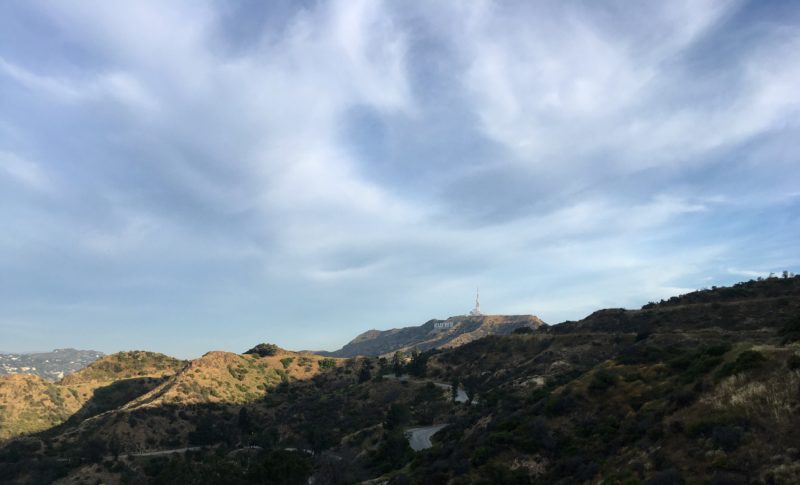 A paper in August’s Physical Review Research reported interstellar dust from a supernova had fallen in Antarctica less than twenty years ago. “The sky has exploded” (Simeon Wade reports Foucault saying this on LSD) “and the stars are raining down on me.”
A paper in August’s Physical Review Research reported interstellar dust from a supernova had fallen in Antarctica less than twenty years ago. “The sky has exploded” (Simeon Wade reports Foucault saying this on LSD) “and the stars are raining down on me.”
Worldwide atmospheric CO2 levels remained higher than they had ever been in human history prior to this year. As August unraveled, the fires in the Amazon transformed countless trees into thin air, turned rainforest into farmland for beef cattle and soybeans.
We used words like “land grab” and “dieback.”
Not knowing what else to do, we moved our mouths around and made noises from within our throats. Sometimes this activity gave us great joy, though at other times it seemed enough to simply give color to our sorrow, or to our despair.
We tried to discern a difference between crisis and cataclysm. We sketched out evolutionary what-ifs: turtles with voices like songbirds, maybe, or moths that ate wool and spun silk.
And we tried to imagine new ways of breathing: we slowed the rise and fall of our chest, added numbers to each breath; we scented the air, and we scented our mouths. We kept plants in our home, and we tended to them, counted their leaves whenever they sprouted and whenever they fell.
At the Getty Villa, a museum built by oil money and modeled after the ruins of Herculaneum, statues in the courtyard had been covered in clear plastic sheets to protect them from ongoing construction, turned into ghosts.
There was an ibis there, concealed under a dead man’s linen shrouds, a fact the museum didn’t know until it was revealed by a CT scan.
Before the month ended, we were home again, and metallic green scarab beetles flew by with a loud vvzz. The beetles have largely given up a diet of cactus fruit in favor of the things people grow in their gardens here. There were birds that, when startled, made a whistling noise with their wings.
There was bougainvillea blooming, and there were century plants blooming and birds of paradise. There were lotuses and roses, and there were agapanthuses. At night there were echinopsis flowers, pale white, almost glowing.
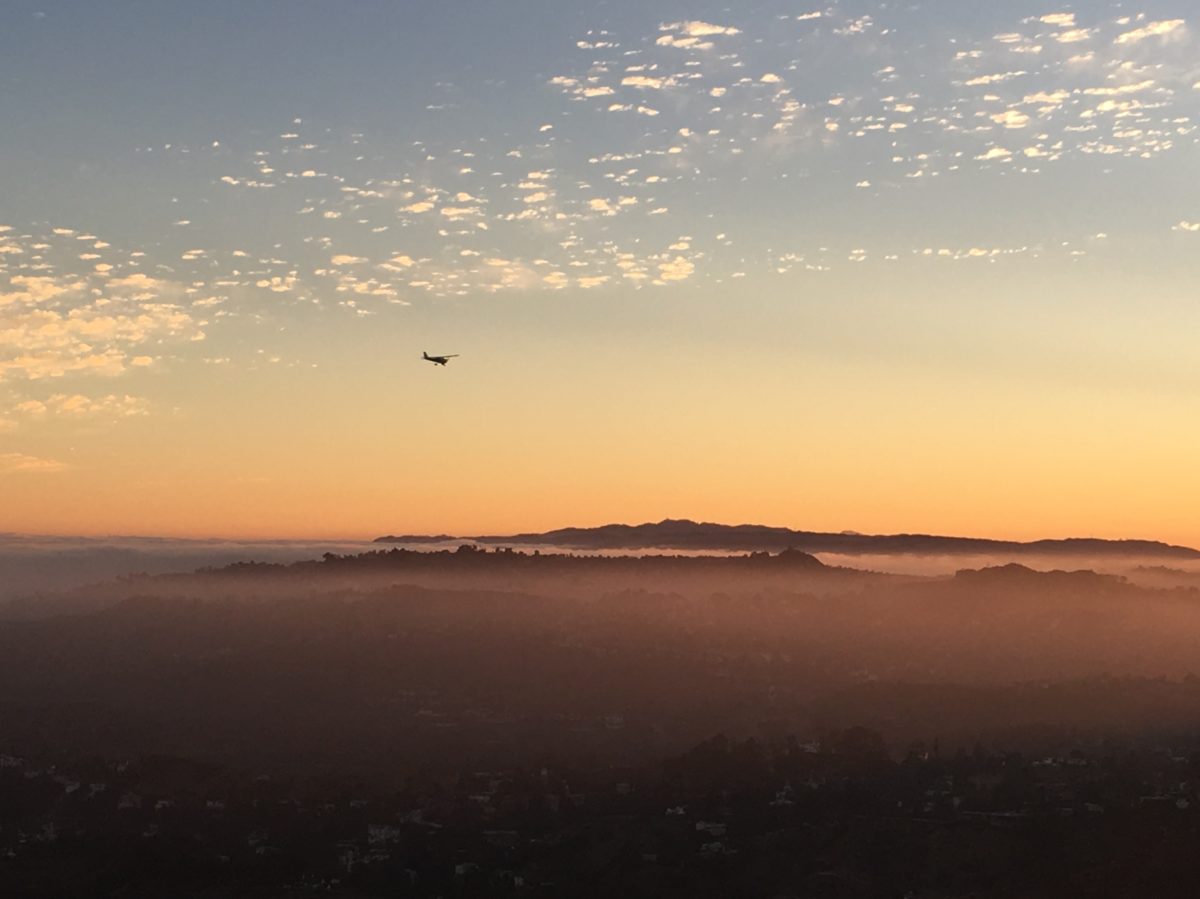
The Washington Post reported that Los Angeles County is four degrees warmer today than it was a hundred years ago. By 2050, the number of 95-degree days could triple.
Spotify played me Irma Thomas’s “Two Winters Long.”
“California fire mystery,” the L.A. Times said, just a few days ago. “No major summer brush fires.”
Then, late Sunday afternoon, wildfire forced the evacuation of at least a hundred homes in nearby Glendale. I could see the smoke from the street outside the apartment building where I live, nearly indistinguishable from the clouds on the horizon. Though we would learn in September that the fire had been started deliberately by men targeting the residents of a homeless encampment, what we were struck by at the time was the sunset sky’s unusual lavender color.




